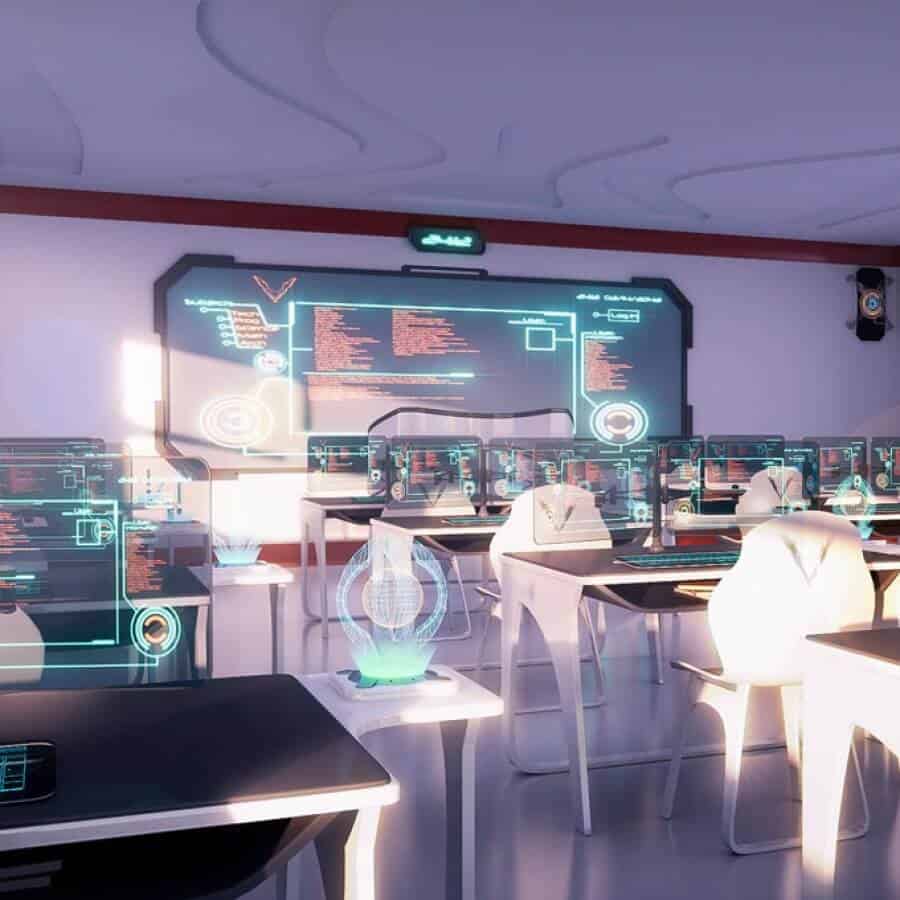The classroom of the future will not be a place where the teacher sits at a desk in the front of the classroom with the students neatly aligned in rows. Learning technologies and evolving pedagogical methods are not only changing the way we teach, but the physical environments we teach in.
Our current education system is in the midst of a creativity crisis. Students are not being inspired to learn. They are not encouraged to use their imaginations to solve problems, or empowered to relate what they learn to real world situations.
Students have been trained to become test-takers. They are rewarded for the mindless repetition of facts. Unfortunately, this skill will do them little good when they graduate into a society that is increasingly finding value in creativity and innovation.
The Curriculum of the Future
In an age where we’re desperate for new answers to old questions and for children to step more readily into leadership roles as innovators, our current system presents a problem.
However, the good news is, there are educators and high-impact social innovators who are rethinking the process of learning. They are redefining play and re- imagining a future driven by creative, engaged and life-long learners.
Across Northern Europe especially, we are seeing an outburst of new models of teaching and education where creativity and teamwork are central to exploring subject areas, and where leadership and empathy are incorporated into peer-to-peer interactions and the daily learning experience.

Some of these projects include Roots of Empathy, an evidence-based classroom program that has shown a significant improvement in student progress in terms of reducing levels of aggression in children while raising social/emotional competence and increasing empathy.
In Norway, the Forskerfabrikken (Scientist Factory) initiative creates, connects and collaborates with young learners to make science and mathematics fun and engaging.
It helps stimulate the positive development of science and technology in society. Through financial and enterprise education, the UK-based organization MyBnk gives teenagers and young adults the knowledge they need to stay out of unmanageable debt, to save regularly, to understand how banks work, and to move towards independence.
These projects (and many others) are re-imaging learning to be playful, creative, and engaging. We already see the world’s leading companies clamoring for employees who have these skills. Knowledge is no longer enough.
We all must be creative, flexible, and empathic problem-solvers. Yet only a handful of the world’s children are consistently provided with the creative learning environments and opportunities necessary to help them develop these skills.

The School of the Future
The school of the future will embody cutting edge sustainability and intelligent design. It fuses nature and technology, encouraging interaction among students, teachers and their environment. With the rapid movement of information across the globe, new opportunities are emerging for making connections between local, regional and global contexts.
The school of the future will use this current technology revolution to position a space for learning at the nexus between knowledge and social interaction.
A great example of this is a project by the Laboratory for Visionary Architecture (LAVA) for the Australia-based Future Proofing Schools competition. Based on a cellular arrangement of prefabricated interlocking modules, the school of the future will be a completely flexible system for learning that always maintains a connection between students and nature.
The design anticipates the future by allowing classes to be subdivided into flexible clusters, which can continuously change. The teacher, rather than being watched like a black box theatre performance, will be in the center of these clusters and will move around in them.
The classroom will act as an adaptable system instead of a fixed hierarchy.

The Technology of the Future
Technology plays a pivotal role in learning by giving teachers and students access to highly engaging and interactive materials. Mobile devices are enriching learning experiences and allowing teachers to break through the confines of traditional classroom walls.
There are many innovative projects that offer content, platforms and solutions that provide quality education to students all over the world. Many of these projects have been created by young people.
The World Summit Youth Award highlights the work of young people around the world who use technology, digital creativity and social innovation to address the United Nations’ Millennium Development Goals. These projects investigate what it means to use technology to take action on societal issues and how the internet, mobile devices and innovative applications can help create a more equitable society and a brighter future for all.
This year’s winning projects in the category of “Education for All” include: Smile Urbo, an interactive role-playing game that encourages players to deliberate issues in order to facilitate development in their communities. Zaya ClassCloud is a project from India, which serves as an effective teaching and learning platform.
It allows teachers to provide high quality digital content to students without the use of the internet. Sterio.me is an interactive audio platform that addresses learning outside of the classroom. Free for educators and learners, it offers users access to pre-recorded audio lessons that are delivered via SMS message.
The classroom of the future will use cutting edge technology, innovative teaching methodologies and human-centered sustainable design to educate the change agents of tomorrow.
They will be adaptable learning spaces that will engage students both online and offline. They will produce students who will be equipped with the knowledge not only to compete in the international job market but to solve the most defining social, environmental, and economic challenges of our time.
This article was originally published in Youth Time print edition, 30th issue. Click here to check the content of the issue, subscribe here, purchase one issue here.
Support us!
All your donations will be used to pay the magazine’s journalists and to support the ongoing costs of maintaining the site.
Share this post
Interested in co-operating with us?
We are open to co-operation from writers and businesses alike. You can reach us on our email at cooperations@youthtimemag.com/magazine@youthtimemag.com and we will get back to you as quick as we can.









